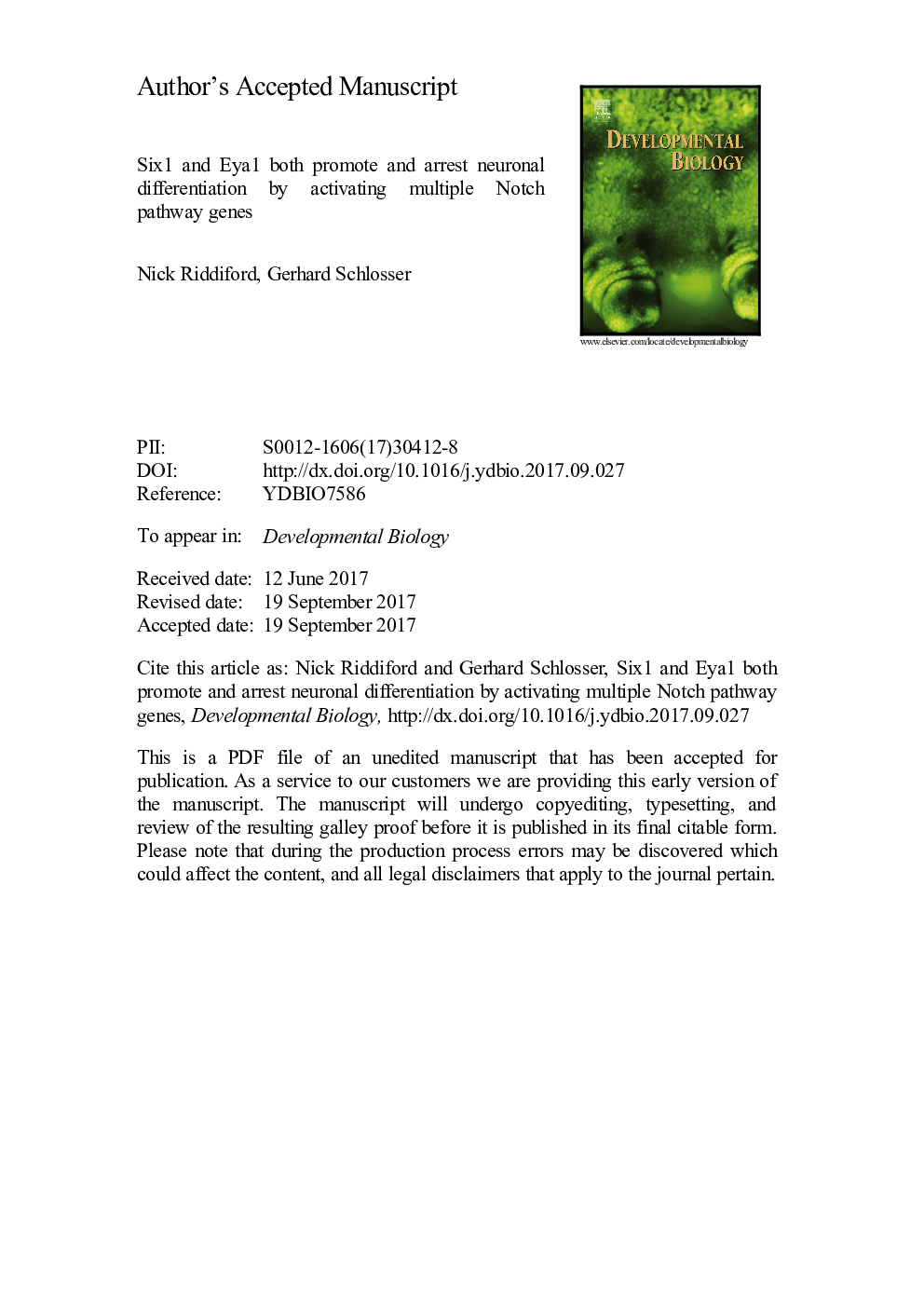| کد مقاله | کد نشریه | سال انتشار | مقاله انگلیسی | نسخه تمام متن |
|---|---|---|---|---|
| 8467827 | 1549560 | 2017 | 37 صفحه PDF | دانلود رایگان |
عنوان انگلیسی مقاله ISI
Six1 and Eya1 both promote and arrest neuronal differentiation by activating multiple Notch pathway genes
دانلود مقاله + سفارش ترجمه
دانلود مقاله ISI انگلیسی
رایگان برای ایرانیان
موضوعات مرتبط
علوم زیستی و بیوفناوری
بیوشیمی، ژنتیک و زیست شناسی مولکولی
بیولوژی سلول
پیش نمایش صفحه اول مقاله

چکیده انگلیسی
The transcription factor Six1 and its cofactor Eya1 are important regulators of neurogenesis in cranial placodes, activating genes promoting both a progenitor state, such as hes8, and neuronal differentiation, such as neurog1. Here, we use gain and loss of function studies in Xenopus laevis to elucidate how these genes function during placodal neurogenesis. We first establish that hes8 is activated by Notch signaling and represses neurog1 and neuronal differentiation, indicating that it mediates lateral inhibition. Using hes8 knockdown we demonstrate that hes8 is essential for limiting neuronal differentiation during normal placode development. We next show that Six1 and Eya1 cell autonomously activate both hes8 and neurog1 in a dose-dependent fashion, with increasing upregulation at higher doses, while neuronal differentiation is increasingly repressed. However, high doses of Six1 and Eya1 upregulate neurog1 only transiently, whereas low doses of Six1 and Eya1 ultimately promote both neurog1 expression and neuronal differentiation. Finally, we show that Six1 and Eya1 can activate hes8 and arrest neuronal differentiation even when Notch signaling is blocked. Our findings indicate that Six1 and Eya1 can both promote and arrest neuronal differentiation by activating the Notch pathway genes neurog1 and hes8, respectively, revealing a novel mechanism of Six1/Eya1 action during placodal neurogenesis.
ناشر
Database: Elsevier - ScienceDirect (ساینس دایرکت)
Journal: Developmental Biology - Volume 431, Issue 2, 15 November 2017, Pages 152-167
Journal: Developmental Biology - Volume 431, Issue 2, 15 November 2017, Pages 152-167
نویسندگان
Nick Riddiford, Gerhard Schlosser,